Photographs: Courtesy US National Archives
June 6 is the 69th anniversary of the invasion of Normandy, considered to be the decisive battle of the Second World War in Western Europe.
The successful allied landing in 1944 in France was a psychological blow to the German occupation of Europe.
It called into question the German Army's ability to control western Europe, dramatically increased partisan activity against enemy occupation, and heartened the spirits of all those fighting against Nazi tyranny.
The balance of power on the continent, already weakened by Soviet offensives into Poland, was decisively tipped into Allied favour. From that point on, the allies would begin the drive into Germany that ultimately destroyed the Nazi regime on 7 May 1945.
Click on NEXT to read 10 interesting facts on the D-Day landing…
June 6, Normandy: The day that re-wrote history
Image: Landing ships putting cargo ashore on one of the invasion beaches, at low tide during the first days of the operation, June 1944.Photographs: Courtesy US National Archives
The original landing at Normandy was supposed to take place on June 5. However stormy waters postponed the invasion until June 6. Many infantry members also became seasick because of the choppy waters.
Click on NEXT to see more PHOTOS...
June 6, Normandy: The day that re-wrote history
Image: USS Tide sinking off 'Utah' beach after striking a mine during the Normandy invasionPhotographs: Courtesy US National Archives
The allied forces landed on the northern shore of Normandy on five American and British military code-named sectors of beach. The Omaha, Utah, Gold, Sword and Juno beaches together made up 50 miles of shoreline.
Click on NEXT to see more PHOTOS...
June 6, Normandy: The day that re-wrote history
Image: Landing craft put troops ashore on 'Omaha' Beach on D-Day, 6 June 1944Photographs: Courtesy US National Archives
The 1st and 29th infantry divisions invaded through Omaha beach, which had the most bloodshed. On D-Day itself, 2,499 Americans were killed on Omaha. The location is sometimes referred to as Blood Omaha because when later troops landed, the water was red with blood. Omaha and Utah had the largest number of troops: Omaha with roughly 34,250 troops and Utah with 23,250.
Click on NEXT to see more PHOTOS...
June 6, Normandy: The day that re-wrote history
Image: Army troops on board a LCT, ready to ride across the English Channel to France. Some of these men wear 101st Airborne Division insigniaPhotographs: Courtesy US National Archives
The invasion was originally known as the Normandy Landings, which was a part of 'Operation Overlord'. However, the landings were code-named D-Day, a name in which much speculation circulated over what the D stood for.
The truth is, there are D-Day's for every war in history, however none have been pegged by the code-name like the Normandy Landings.
Click on NEXT to see more PHOTOS...
June 6, Normandy: The day that re-wrote history
Image: D-Day beach traffic, photographed from a Ninth Air Force bomber on June 6, 1944. Note the vehicle lanes leading away from the landing areas, and landing craft left aground by the tide.Photographs: Courtesy US National Archives
By D-5, or five days after the invasion, only one-third of a million men landed on the shores of the five beaches on Normandy's northern coast.
Click o nNEXT to see more PHOTOS...
June 6, Normandy: The day that re-wrote history
Image: Troops and crewmen aboard a Coast Guard manned LCVP as it approaches a Normandy beach on D-DayPhotographs: Courtesy US National Archives
More than half the Sherman DD tanks (Duplex Drive tanks pejoratively called "Donald Ducks" for their temperamental nature), didn't make it to Omaha Beach, most sinking short of the beach with everyone inside. Later groups that made it in closer to the shore survived, and helped capture Omaha Beach.
Click on NEXT to see more PHOTOS...
June 6, Normandy: The day that re-wrote history
Image: Crossed rifles in the sand are a comrade's tribute to this American soldier who sprang ashore from a landing barge and died at the barricades of Western Europe in this 1944 file photoPhotographs: Reuters/US National Archives
A number of code words from the D-Day mission (beaches Utah, Omaha, Gold, Sword and Juno, operations terms Overlord and Neptune, and floating harbors named Mulberry) did appear in The Daily Telegraph crossword puzzles over the span of a month before D-Day. MI-5 investigated, but found no evidence of leaks.
Click on NEXT to see more PHOTOS...
June 6, Normandy: The day that re-wrote history
Image: British LCT's line the Normandy shore, each with a barrage balloon designed to discourage enemy air attack in this file photo taken sometime before D-Day invasionPhotographs: Reuters/US National Archives
The first American to make it to Normandy was Captain Frank Lillyman, who parachuted in. He was wounded later in the day, and won the Medal of Valour. He continued to serve in the military until 1968, retiring at the rank of Lt. Colonel. He died three years later.
Click on NEXT to see more PHOTOS...
June 6, Normandy: The day that re-wrote history
Image: A Coast Guard Combat Photographer came upon this monument to a dead American soldier somewhere on the shell-blasted shore of Normandy, in this June 1944 file photoPhotographs: Reuters/US National Archives
Numbers represent total killed, wounded, missing or captured:
United States -- 6,603 (1,465 killed)
United Kingdom -- 2,700
Canada -- 1,074 (359 fatal)
Germany -- Estimated between 4,000-9,000
Click on NEXT to see more PHOTOS...
June 6, Normandy: The day that re-wrote history
Image: A happy crowd of American soldiers receive a warm welcome from the inhabitants of Cherbourg, after its liberationPhotographs: Keystone/Getty Images
By June 11, with the beachheads firmly secured, more than 326,000 troops had crossed with more than 100,000 tons of military equipment. Paris was liberated on August 25.
Click on MORE to see another set of PHOTOS...


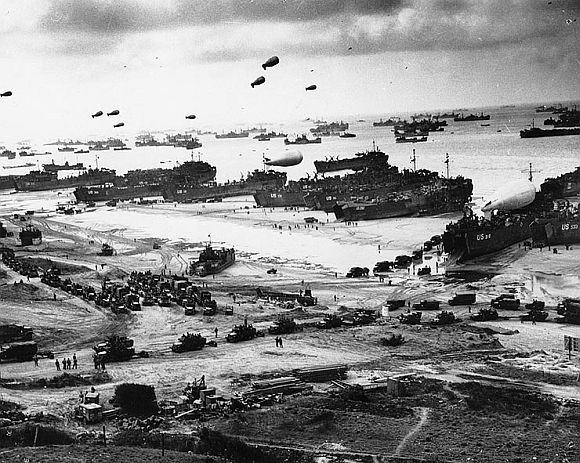
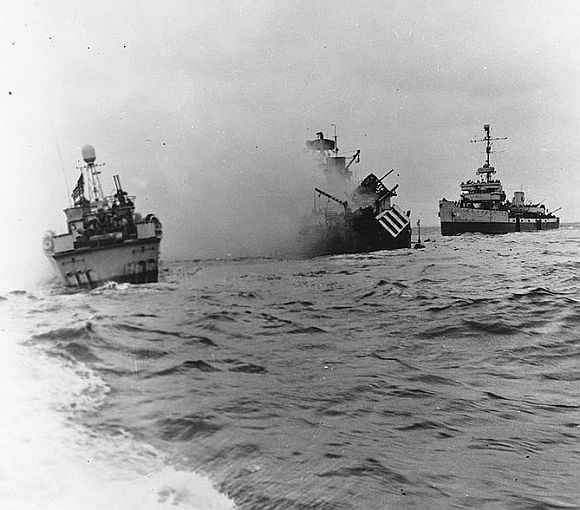
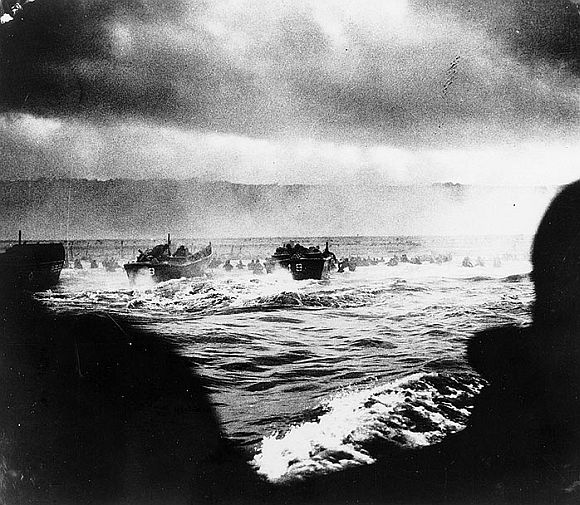
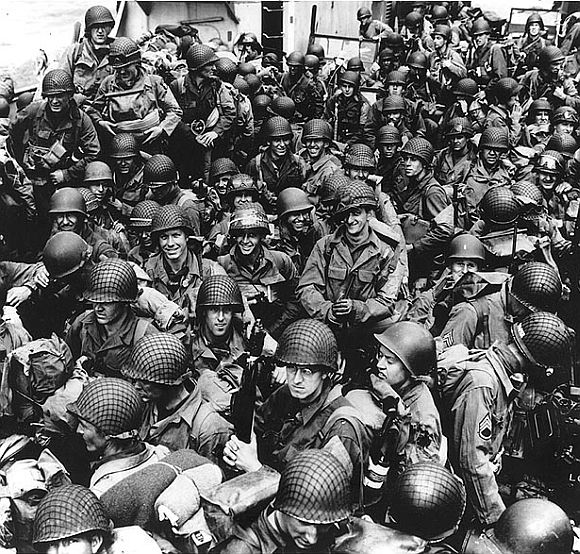

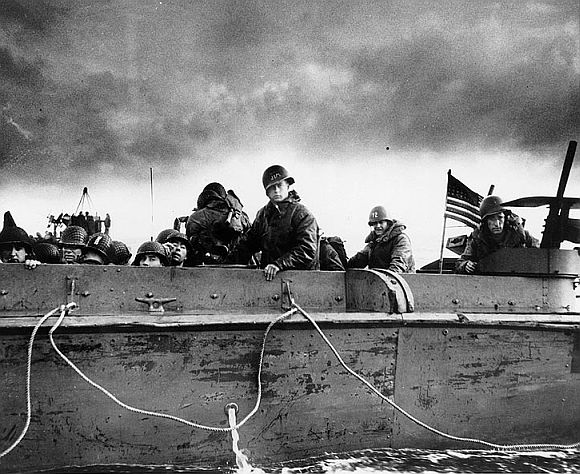
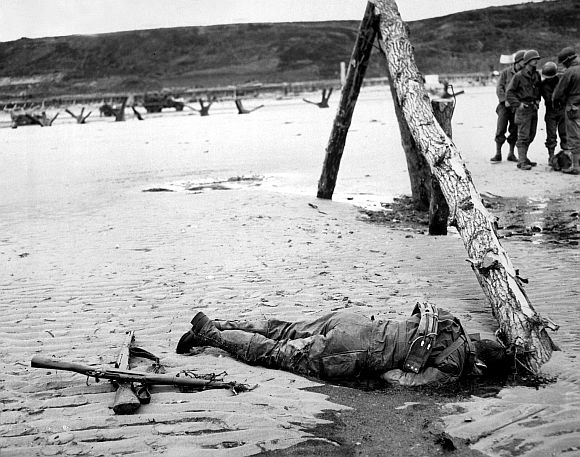
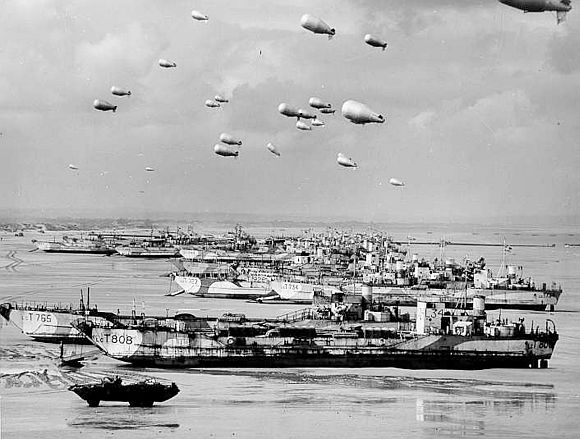
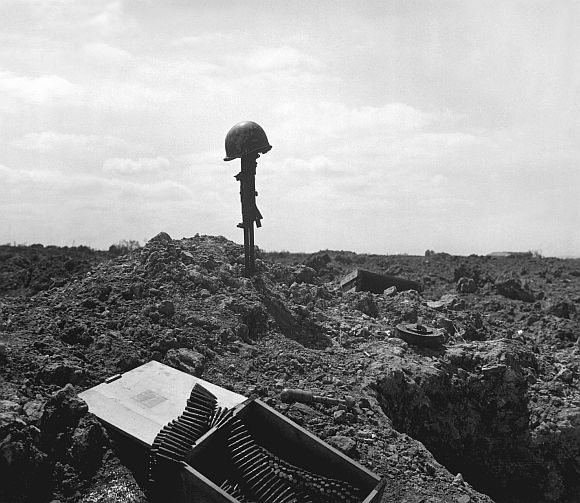
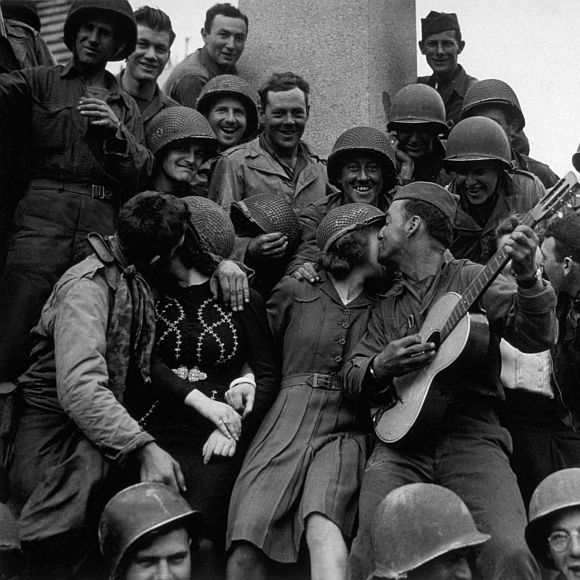
article